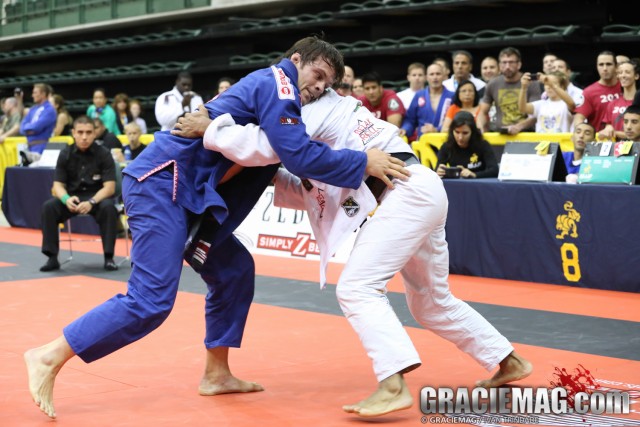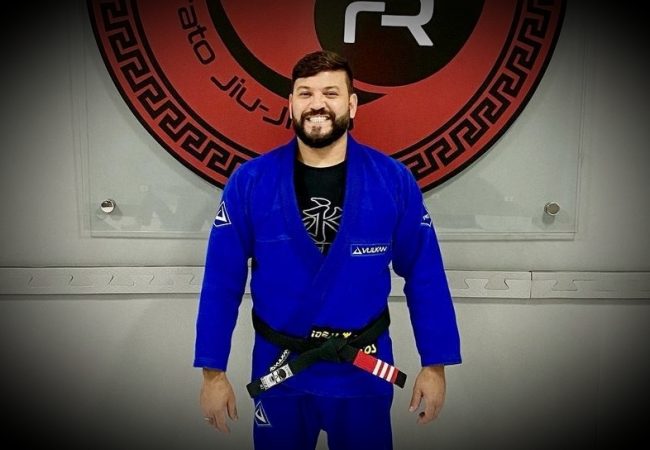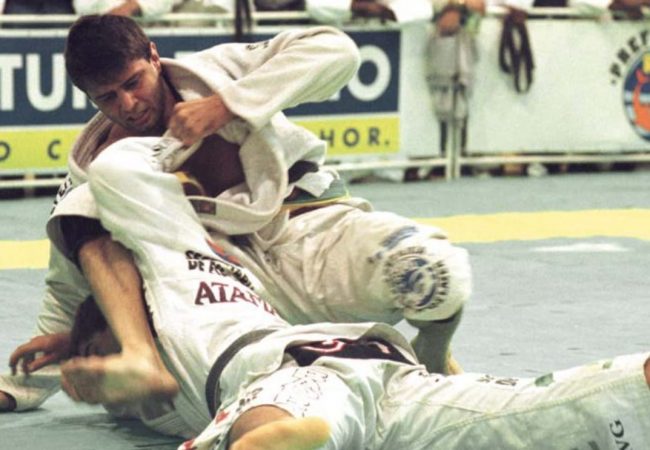[First published in 2010. Scroll down for plain text. Continued from here.]
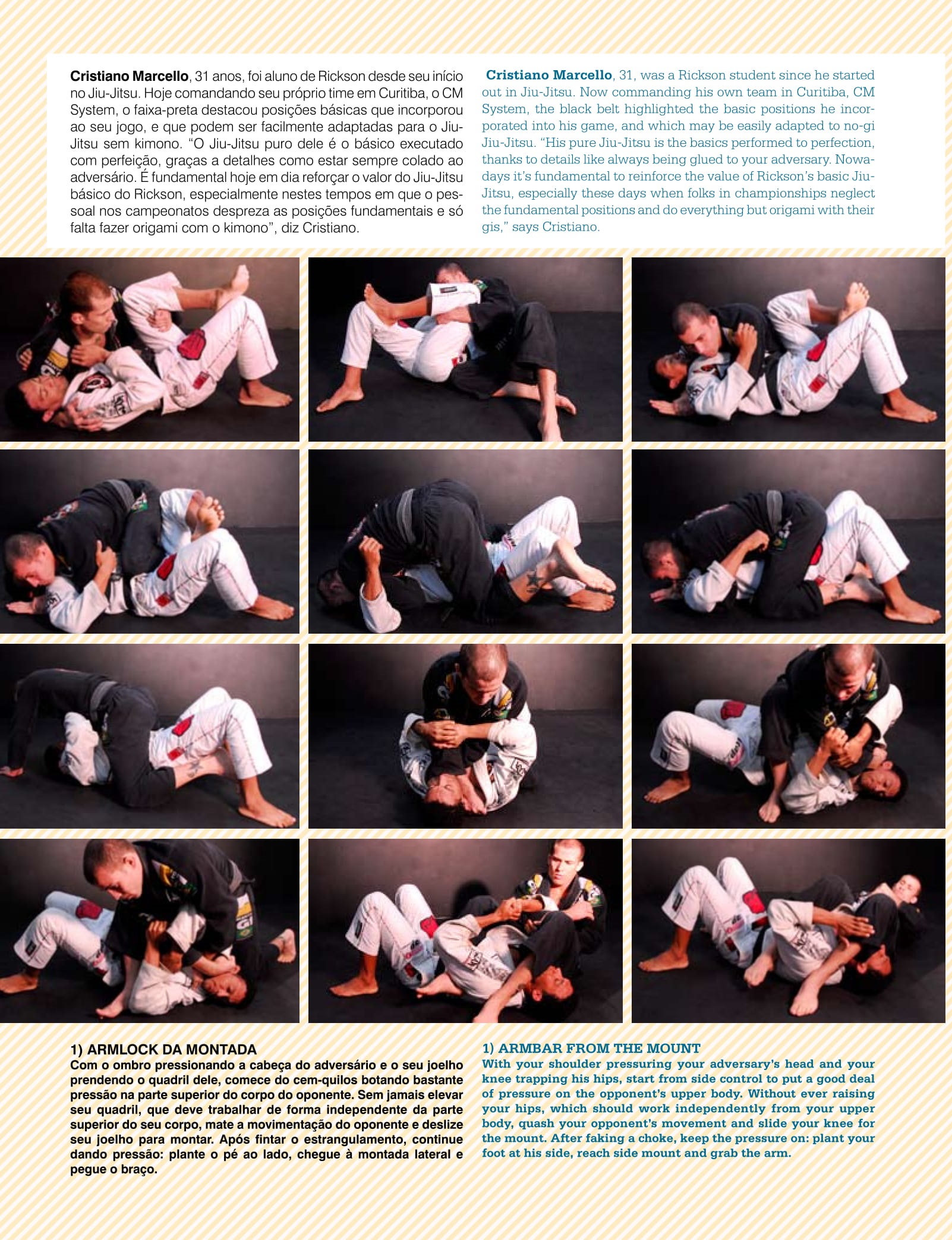
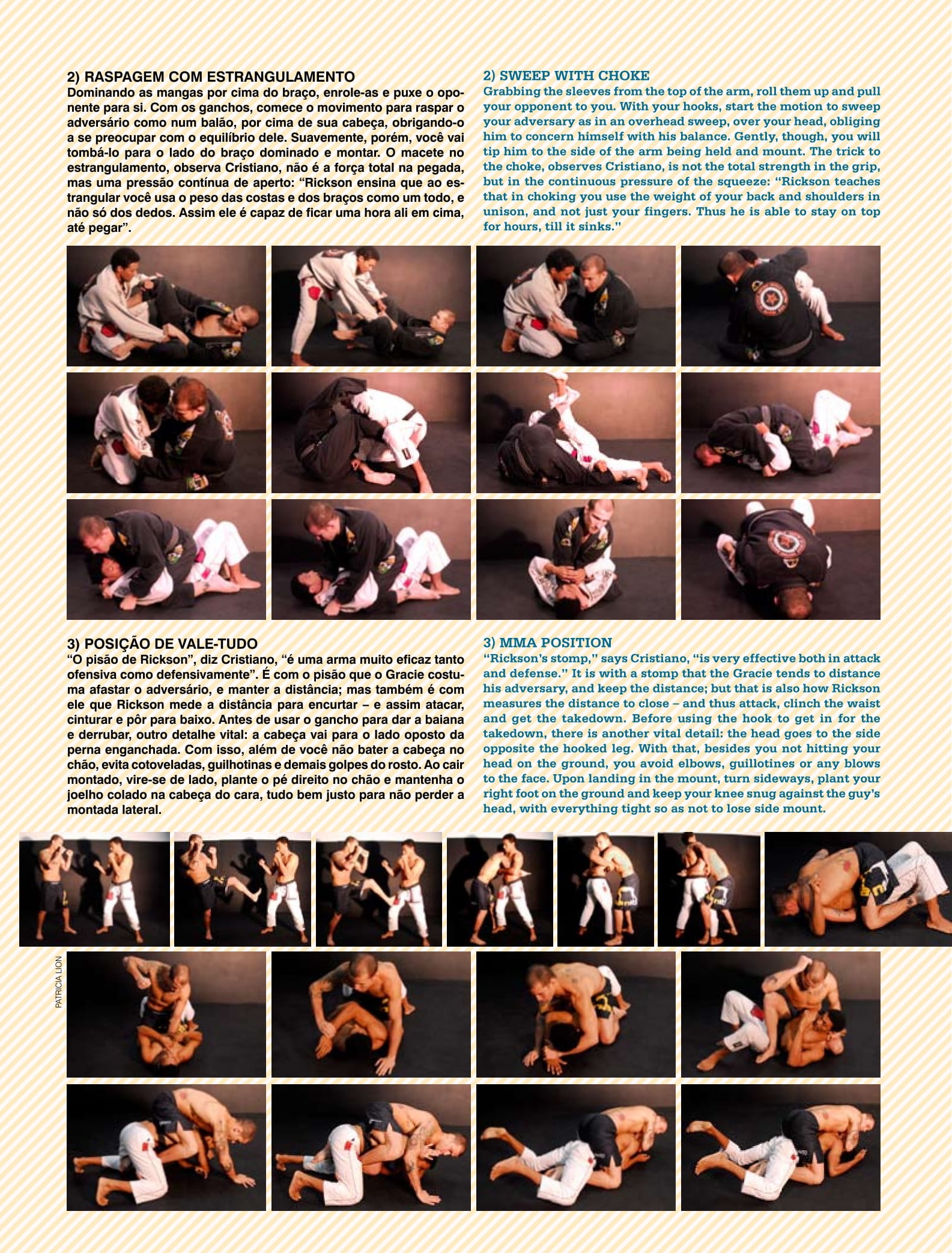
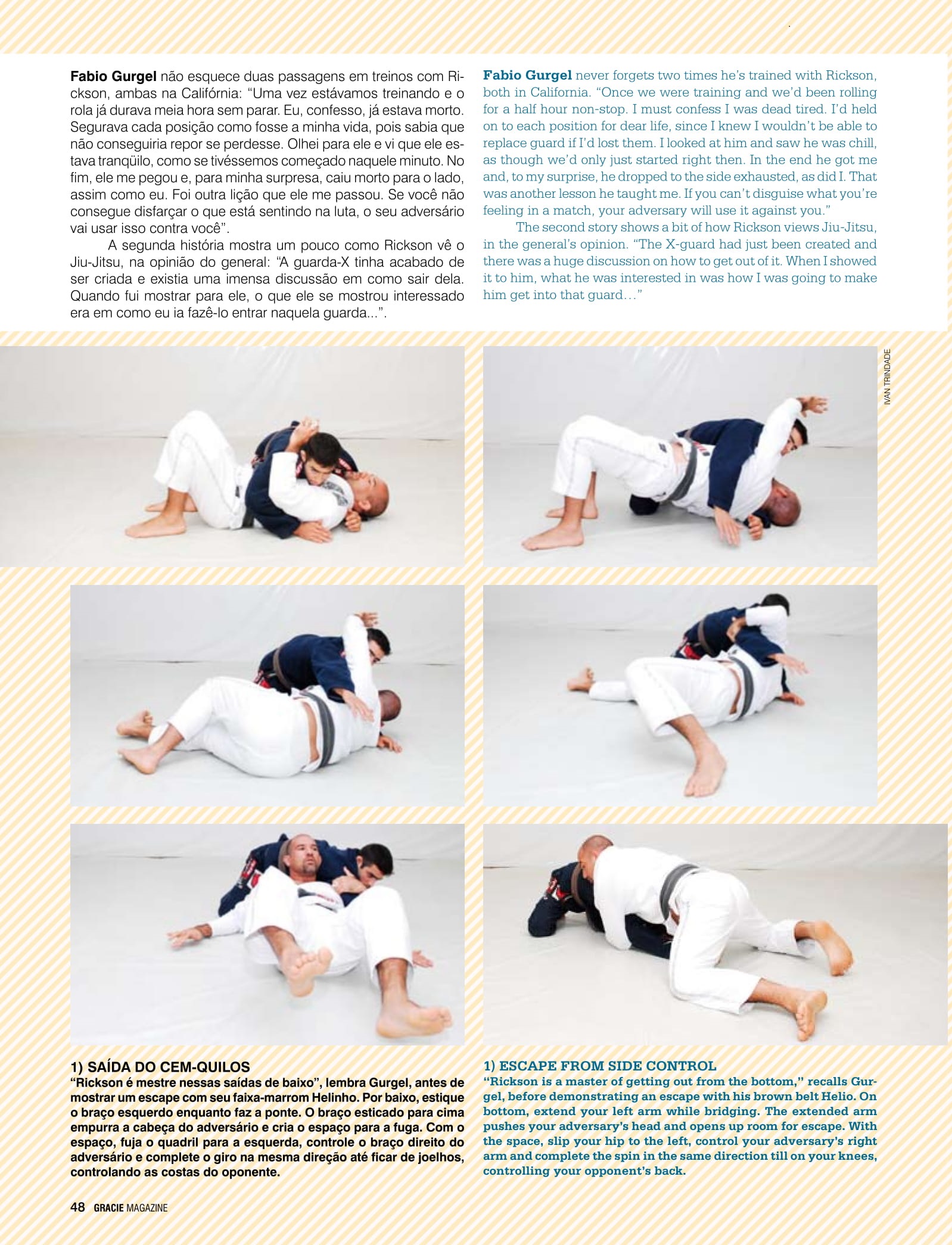
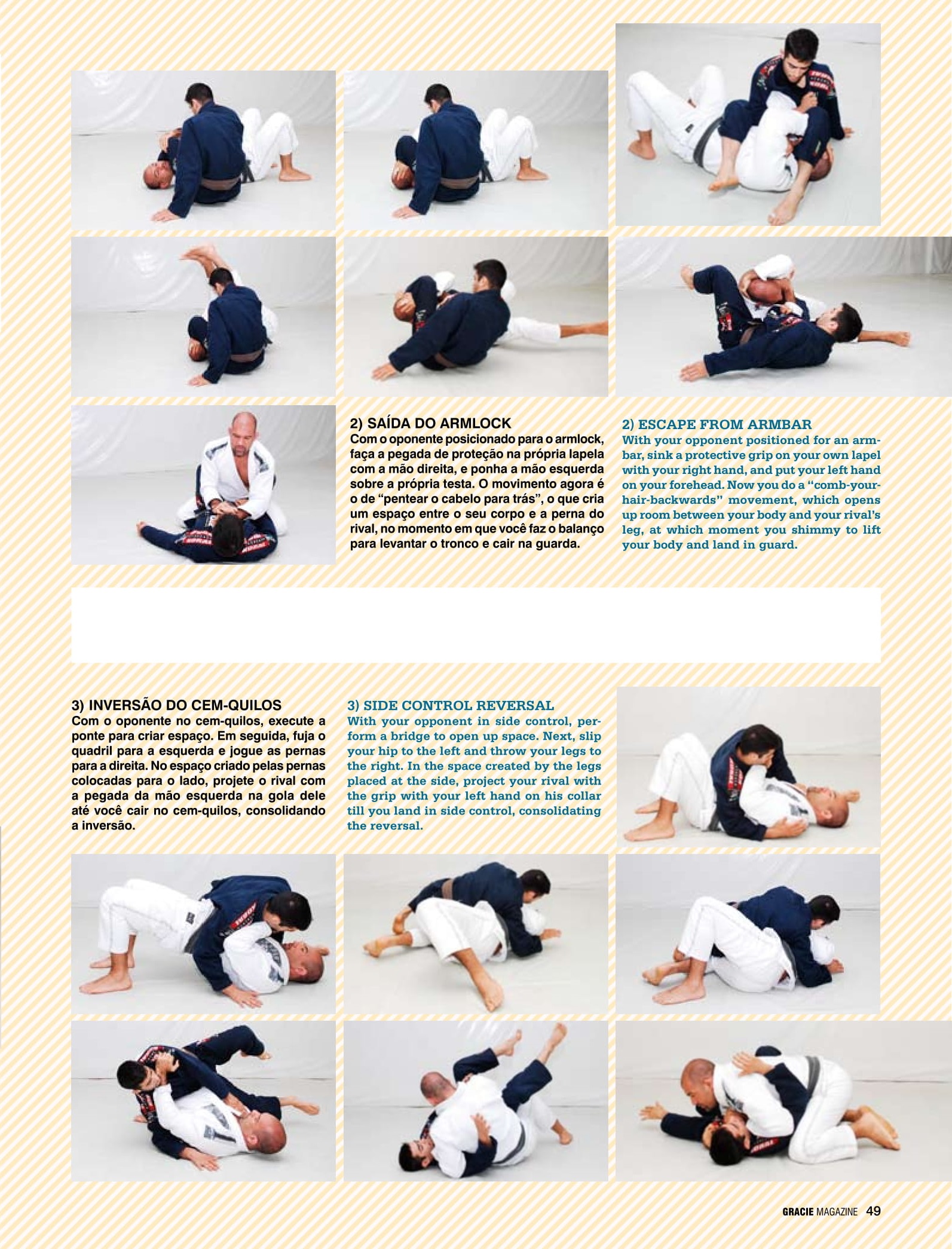
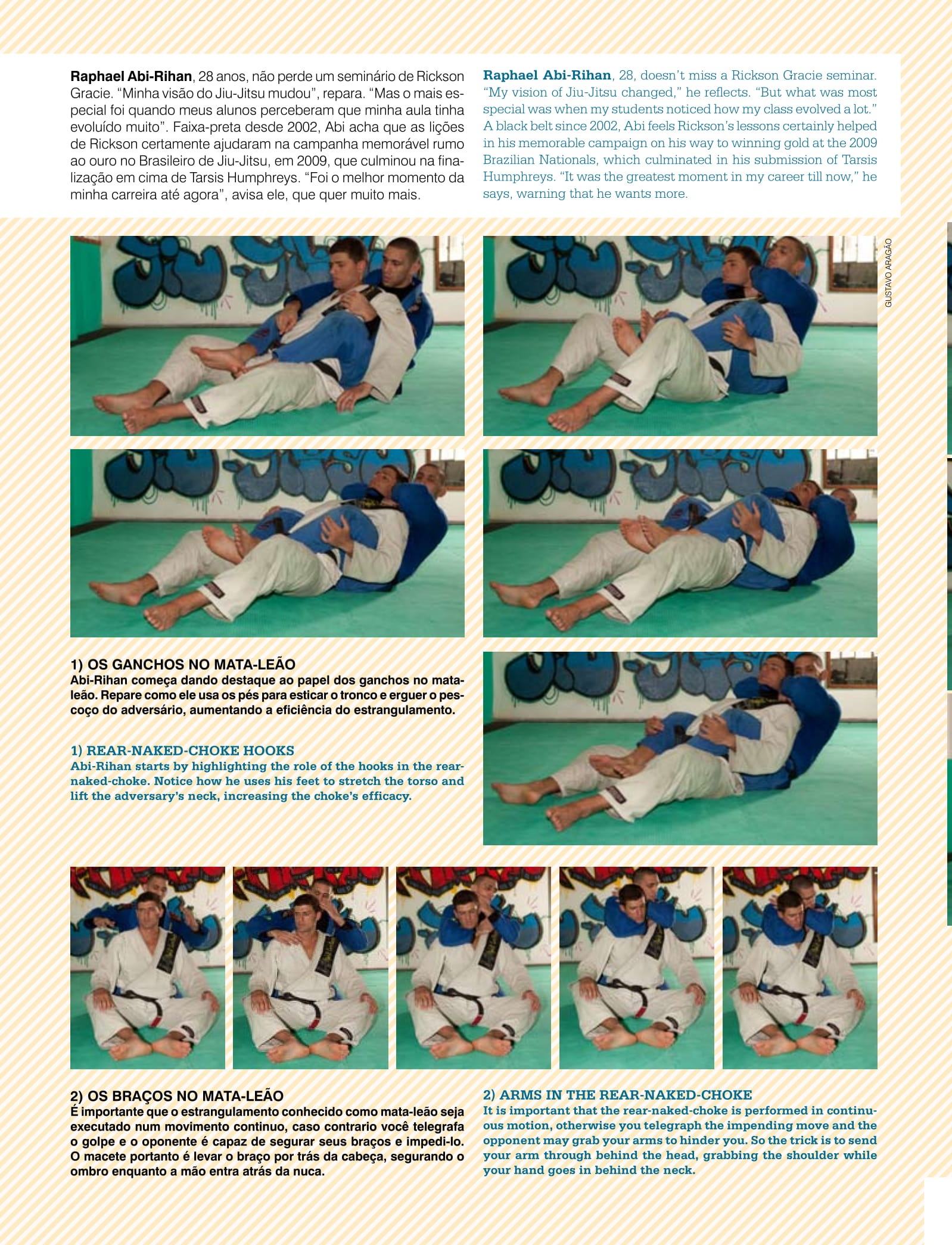
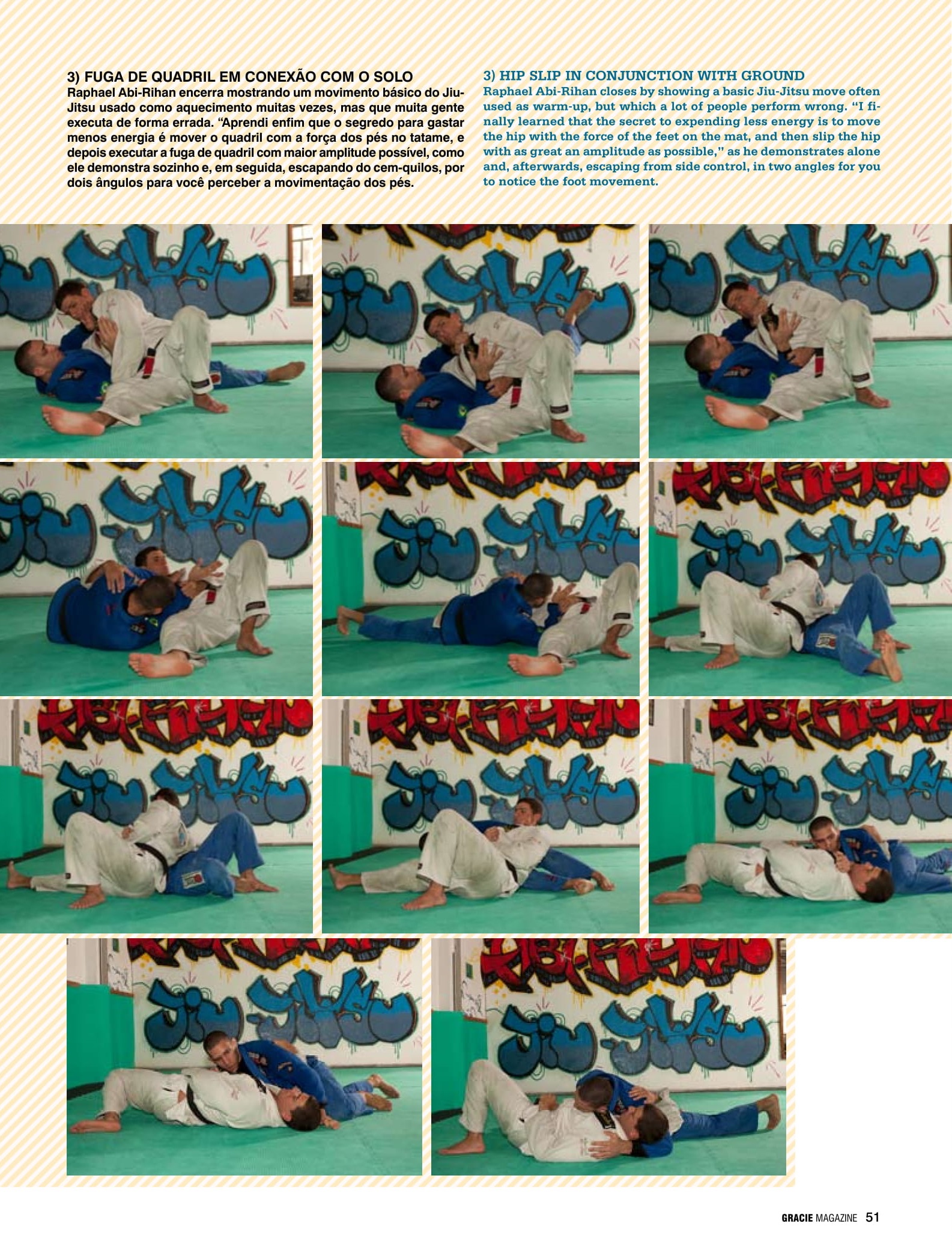
[Wanna learn self-defense straight from Rickson Gracie? You can!]
Cristiano Marcello, 31, was a Rickson student since he started
out in Jiu-Jitsu. Now commanding his own team in Curitiba, CM
System, the black belt highlighted the basic positions he incorporated into his game, and which may be easily adapted to no-gi
Jiu-Jitsu. “His pure Jiu-Jitsu is the basics performed to perfection,
thanks to details like always being glued to your adversary. Nowadays it’s fundamental to reinforce the value of Rickson’s basic Jiu-Jitsu, especially these days when folks in championships neglect
the fundamental positions and do everything but origami with their
gis,” says Cristiano.
1) Armbar from the mount
With your shoulder pressuring your adversary’s head and your
knee trapping his hips, start from side control to put a good deal
of pressure on the opponent’s upper body. Without ever raising
your hips, which should work independently from your upper
body, quash your opponent’s movement and slide your knee for
the mount. After faking a choke, keep the pressure on: plant your
foot at his side, reach side mount and grab the arm.
2) Sweep with choke
Grabbing the sleeves from the top of the arm, roll them up and pull
your opponent to you. With your hooks, start the motion to sweep
your adversary as in an overhead sweep, over your head, obliging
him to concern himself with his balance. Gently, though, you will
tip him to the side of the arm being held and mount. the trick to
the choke, observes Cristiano, is not the total strength in the grip,
but in the continuous pressure of the squeeze: “Rickson teaches
that in choking you use the weight of your back and shoulders in
unison, and not just your fingers. thus he is able to stay on top
for hours, till it sinks.”
3) MMA position
“Rickson’s stomp,” says Cristiano, “is very effective both in attack
and defense.” it is with a stomp that the Gracie tends to distance
his adversary, and keep the distance; but that is also how Rickson
measures the distance to close – and thus attack, clinch the waist
and get the takedown. before using the hook to get in for the
takedown, there is another vital detail: the head goes to the side
opposite the hooked leg. With that, besides you not hitting your
head on the ground, you avoid elbows, guillotines or any blows
to the face. upon landing in the mount, turn sideways, plant your
right foot on the ground and keep your knee snug against the guy’s
head, with everything tight so as not to lose side mount.
Fabio Gurgel never forgets two times he’s trained with Rickson,
both in California. “Once we were training and we’d been rolling
for a half hour non-stop. I must confess I was dead tired. I’d held
on to each position for dear life, since I knew I wouldn’t be able to
replace guard if I’d lost them. I looked at him and saw he was chill,
as though we’d only just started right then. In the end he got me
and, to my surprise, he dropped to the side exhausted, as did I. That
was another lesson he taught me. If you can’t disguise what you’re
feeling in a match, your adversary will use it against you.”
The second story shows a bit of how Rickson views Jiu-Jitsu,
in the general’s opinion. “The X-guard had just been created and
there was a huge discussion on how to get out of it. When I showed
it to him, what he was interested in was how I was going to make
him get into that guard…”
1) escape from side control
“Rickson is a master of getting out from the bottom,” recalls Gurgel, before demonstrating an escape with his brown belt Helio. on
bottom, extend your left arm while bridging. the extended arm
pushes your adversary’s head and opens up room for escape. With
the space, slip your hip to the left, control your adversary’s right
arm and complete the spin in the same direction till on your knees,
controlling your opponent’s back.
2) escape from armbar
With your opponent positioned for an armbar, sink a protective grip on your own lapel
with your right hand, and put your left hand
on your forehead. now you do a “comb-your-hair-backwards” movement, which opens
up room between your body and your rival’s
leg, at which moment you shimmy to lift
your body and land in guard.
3) Side control reversal
With your opponent in side control, perform a bridge to open up space. next, slip
your hip to the left and throw your legs to
the right. in the space created by the legs
placed at the side, project your rival with
the grip with your left hand on his collar
till you land in side control, consolidating
the reversal.
Raphael Abi-Rihan, 28, doesn’t miss a Rickson Gracie seminar.
“My vision of Jiu-Jitsu changed,” he reflects. “But what was most
special was when my students noticed how my class evolved a lot.”
A black belt since 2002, Abi feels Rickson’s lessons certainly helped
in his memorable campaign on his way to winning gold at the 2009
Brazilian Nationals, which culminated in his submission of Tarsis
Humphreys. “It was the greatest moment in my career till now,” he
says, warning that he wants more.
1) Rear-naked-choke hooks
Abi-Rihan starts by highlighting the role of the hooks in the rear-naked-choke. notice how he uses his feet to stretch the torso and
lift the adversary’s neck, increasing the choke’s efficacy
2) Arms in the rear-naked-choke
it is important that the rear-naked-choke is performed in continuous motion, otherwise you telegraph the impending move and the
opponent may grab your arms to hinder you. So the trick is to send
your arm through behind the head, grabbing the shoulder while
your hand goes in behind the neck.
3) hip slip in conjunction with ground
Raphael Abi-Rihan closes by showing a basic jiu-jitsu move often
used as warm-up, but which a lot of people perform wrong. “i finally learned that the secret to expending less energy is to move
the hip with the force of the feet on the mat, and then slip the hip
with as great an amplitude as possible,” as he demonstrates alone
and, afterwards, escaping from side control, in two angles for you
to notice the foot movement.


